Broad Money M3
Broad money (M3) includes currency, deposits with an agreed maturity of up to two years, deposits redeemable at notice of up to three months and repurchase agreements, money market fund shares/units and debt securities up to two years.
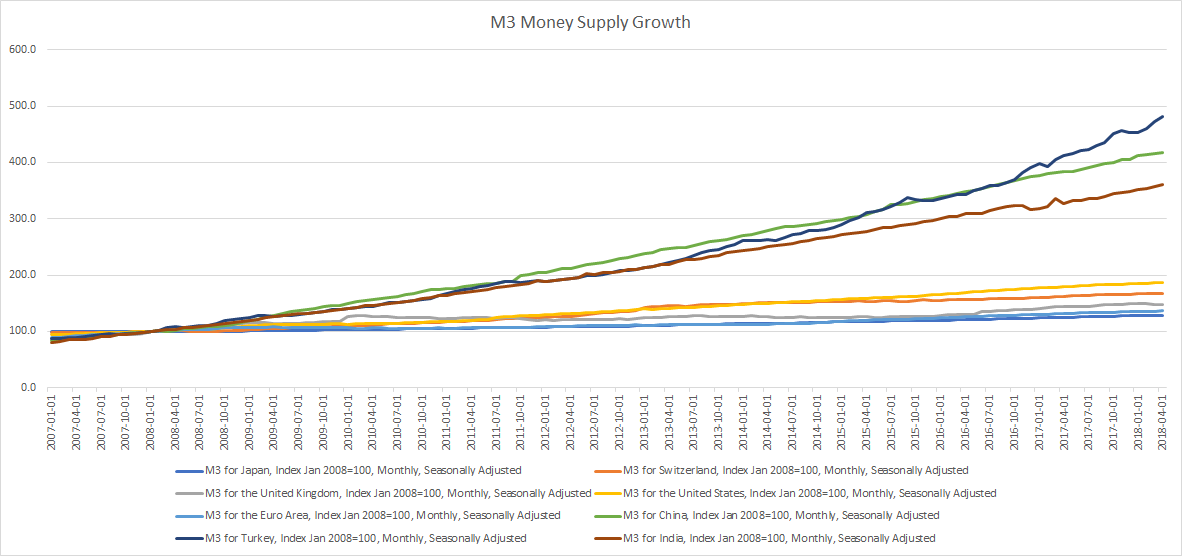
Money Velocity
The velocity of M3 helps determine how often financial assets are switching hands within the economy.
The Equation of Exchange
MV=PQ
Money Supply (M) * Money Velocity (V) = Price level (P) * Real economic output (Q)
Alternatively, Money Supply * Money Velocity = Nominal GDP
Is Inflation as low as the official numbers claim it is or is money velocity super low? (Related: The curious case of low U.S. money velocity)
Here are charts for each country,
Japan
Growth since January 1, 2008: 28.4%
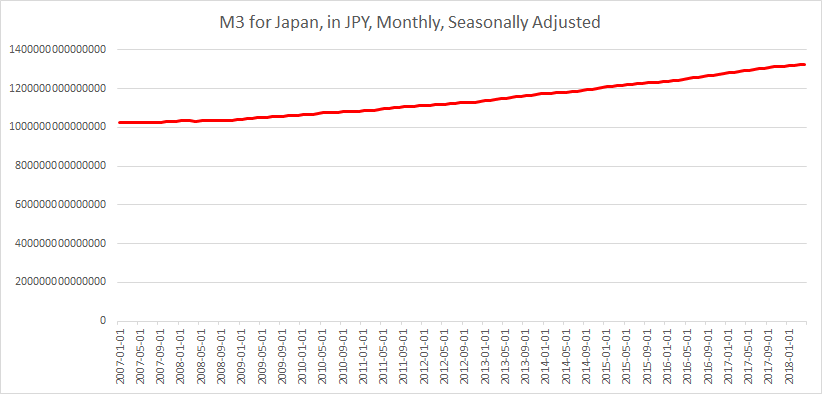
Switzerland
Growth since January 1, 2008: 67.3%
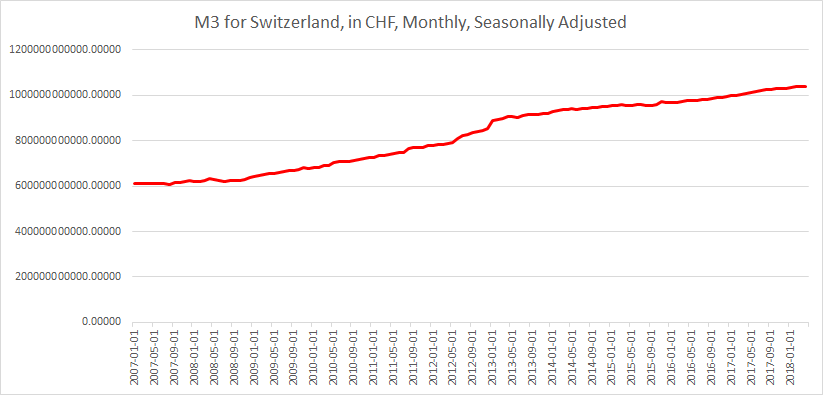
United Kingdom
Growth since January 1, 2008: 48.2%
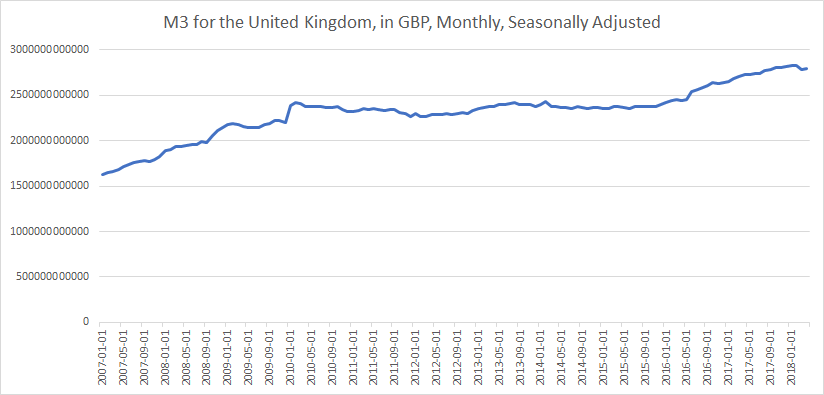
United States
Growth since January 1, 2008: 86.3%
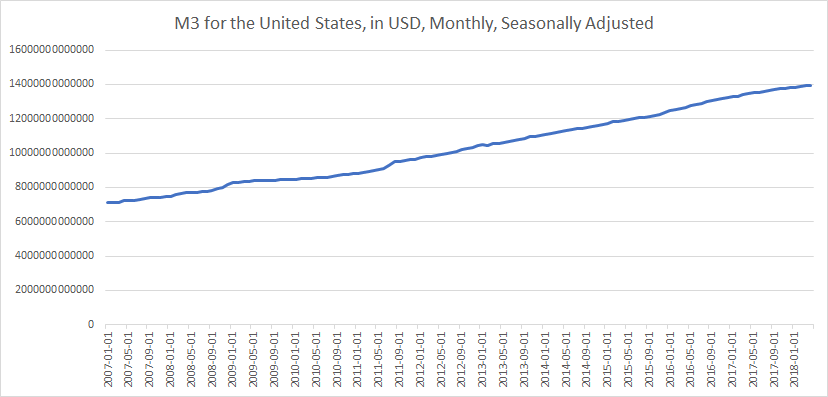
Euro Area
Growth since January 1, 2008: 36.5%
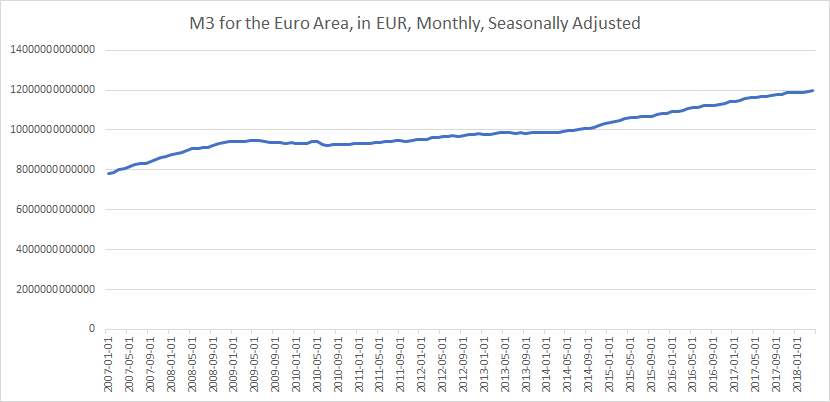
China
Growth since January 1, 2008: 318.4%
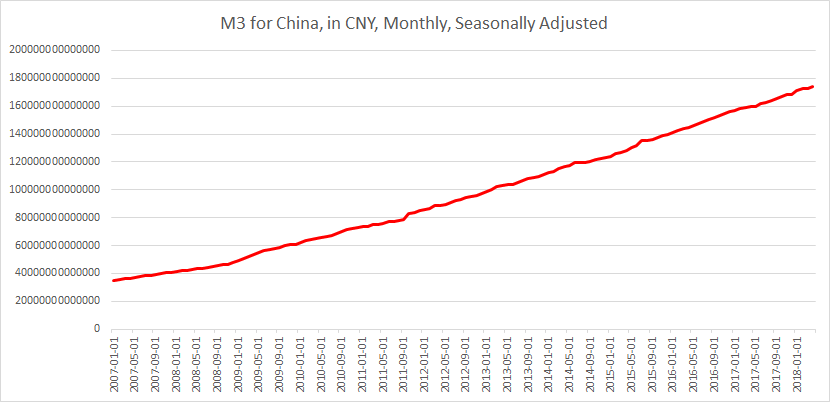
Turkey
Growth since January 1, 2008: 381.8%
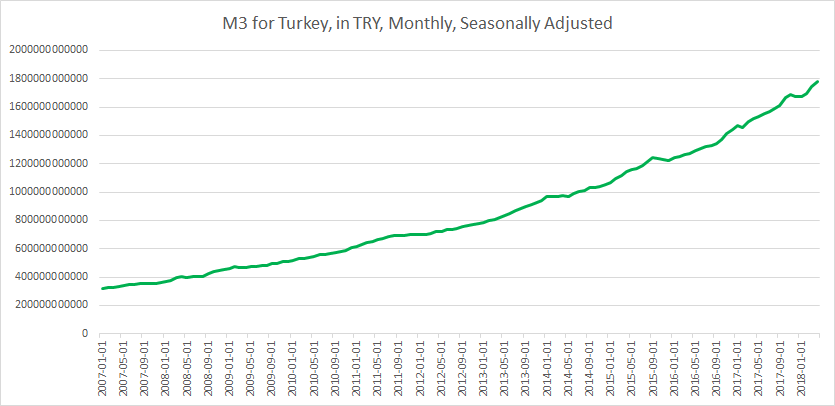
India
Growth since January 1, 2008: 260.4%
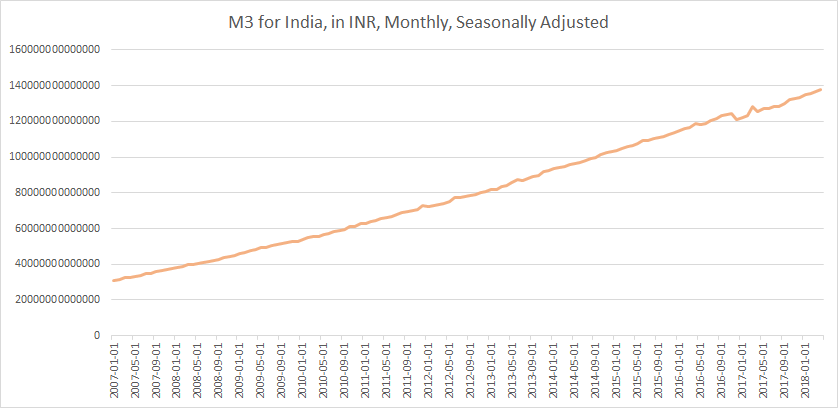
Related: